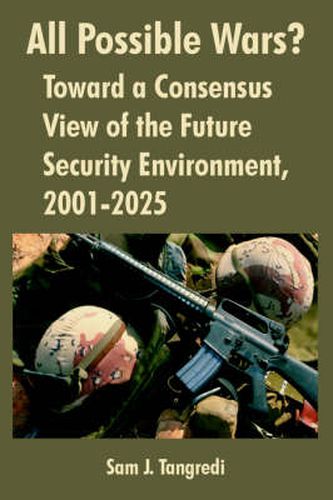Readings Newsletter
Become a Readings Member to make your shopping experience even easier.
Sign in or sign up for free!
You’re not far away from qualifying for FREE standard shipping within Australia
You’ve qualified for FREE standard shipping within Australia
The cart is loading…






This title is printed to order. This book may have been self-published. If so, we cannot guarantee the quality of the content. In the main most books will have gone through the editing process however some may not. We therefore suggest that you be aware of this before ordering this book. If in doubt check either the author or publisher’s details as we are unable to accept any returns unless they are faulty. Please contact us if you have any questions.
This survey is a product of the Quadrennial Defense Review (QDR) 2001 Working Group, a project of the Institute for National Strategic Studies at the National Defense University. Sponsored by the Chairman of the Joint Chiefs of Staff, the working group is an independent, honest-broker effort intended to build intellectual capital for the upcoming QDR. More specifically, it aims to frame issues, develop options, and provide insights for the Chairman, the services, and the next administration in three areas: defense strategy, criteria for sizing conventional forces, and force structure for 2005–2010. One of the group’s initial tasks was to assess the future security environment to the year 2025. This was pursued by surveying the available literature to identify areas of consensus and debate. The goal was to conduct an assessment that would be far more comprehensive than any single research project or group effort could possibly produce. This survey documents major areas of agreement and disagreement across a range of studies completed since the last QDR in 1997. Because it distills a variety of sources and organizes and compares divergent views, this volume makes a unique contribution to the literature. It also provides a particularly strong set of insights and assumptions on which both strategists and force planners can draw in the next Quadrennial Defense Review. Michele A. Flournoy Project Director
$9.00 standard shipping within Australia
FREE standard shipping within Australia for orders over $100.00
Express & International shipping calculated at checkout
This title is printed to order. This book may have been self-published. If so, we cannot guarantee the quality of the content. In the main most books will have gone through the editing process however some may not. We therefore suggest that you be aware of this before ordering this book. If in doubt check either the author or publisher’s details as we are unable to accept any returns unless they are faulty. Please contact us if you have any questions.
This survey is a product of the Quadrennial Defense Review (QDR) 2001 Working Group, a project of the Institute for National Strategic Studies at the National Defense University. Sponsored by the Chairman of the Joint Chiefs of Staff, the working group is an independent, honest-broker effort intended to build intellectual capital for the upcoming QDR. More specifically, it aims to frame issues, develop options, and provide insights for the Chairman, the services, and the next administration in three areas: defense strategy, criteria for sizing conventional forces, and force structure for 2005–2010. One of the group’s initial tasks was to assess the future security environment to the year 2025. This was pursued by surveying the available literature to identify areas of consensus and debate. The goal was to conduct an assessment that would be far more comprehensive than any single research project or group effort could possibly produce. This survey documents major areas of agreement and disagreement across a range of studies completed since the last QDR in 1997. Because it distills a variety of sources and organizes and compares divergent views, this volume makes a unique contribution to the literature. It also provides a particularly strong set of insights and assumptions on which both strategists and force planners can draw in the next Quadrennial Defense Review. Michele A. Flournoy Project Director